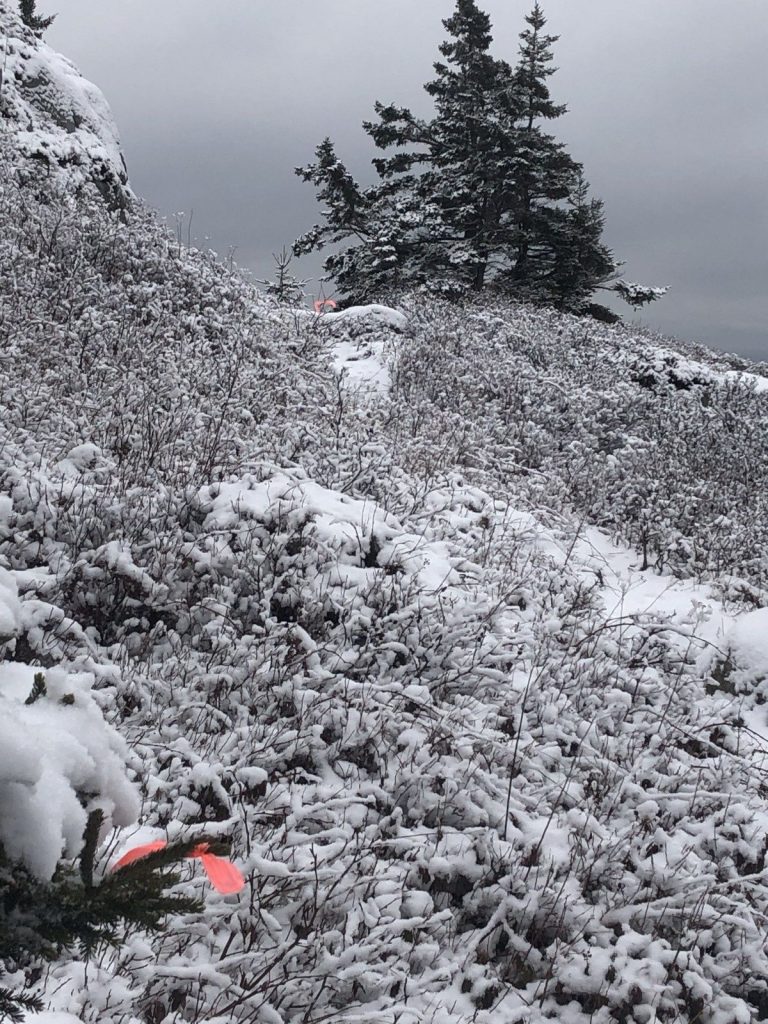Maintaining Nova Scotia's Seaside Trails
by Ryan

Project Details
Ryan's Trail Management Experience - Enhancing Visitor Experience on Coastal Trails: Worked on 5 coastal trails to clear them of litter, refresh signage, and make trail markings more clear.
Project Description
As someone who enjoys hiking, I was well aware of the state of our public hiking trails in Nova Scotia. Even so, in my opinion the Nova Scotian coastline is best seen and explored from these trails. I hoped that if I could help make people’s experiences with them more positive, safe, and pleasant, I could help foster a deeper connection between Nova Scotians and the ocean. If people have that connection to our coastline, they will hopefully be more eager to protect it. The most obvious issue with most of these trails was litter. The most popular trails were choked with cigarettes and Tim Hortons cups. While this was no surprise, what I did not expect were the more bizarre things people left behind. On one trail, a decapitated deer’s head welcomed hikers to an otherwise beautiful area. On another, someone had left an entire box filled with various salad dressings. In total, I collected about 50 lbs of garbage, which shows the severity of this issue. I also marked many of the trails I visited. When trails are ambiguous, they should be marked with flagging tape to ensure people don’t get lost and can easily find their way. As a rule of thumb, a person standing at one marker should always be able to see the next one. Lastly, I wanted to ensure people had access to accurate information about these trails. To accomplish this I left reviews on almost all the trails I visited, including information about accessibility and difficulty. In one case, a trail was marked on Google Maps that was in reality closed due to heated disputes with the landowners. I think this project will improve people’s experiences on these trails and hopefully inspire them to protect our marine ecology for future generations.
What was your biggest challenge?
While trying to clean and maintain the trails on my list, my biggest challenge was the travelling salesman problem. As most of the trails I was maintaining were on the coast and accessed only by long, winding roads, it was difficult to cut driving time down enough to be able to visit these trails. I overcame this mainly by trying to find trails that were close together, and whenever possible picking trails that were nearby where I was already driving to. Were I to do the project over, I still would not have a better solution, as the distance between coastal trails was a difficult barrier to work around. Planning and executing a project of this type was also a new experience for me. I had to learn how to budget, how to anticipate problems that might arise, and how best to utilize my time and resources to achieve the best results. These are important skills and I think over the course of the project I learned how to overcome those challenges.
What was your most valuable takeaway?
My most valuable takeaway from this project is simply the effect that an individual or small group can have on the community. I feel proud that my project will have a positive impact on the thousands of people who regularly use the trails I visited. It seems other ocean service projects had similar or greater reach in their engagement in the community. While big changes may need to come from legislation and large-scale reform, a lot of good can still be done on the local level. I think this project and others like it show the importance and utility of public service projects, citizen science, and similar community involvement as an effective tool for combatting many serious issues, environmental or otherwise. I sincerely hope I will have the opportunity to do something like this again, and I will be seeking out other opportunities to aid my community in the future.








